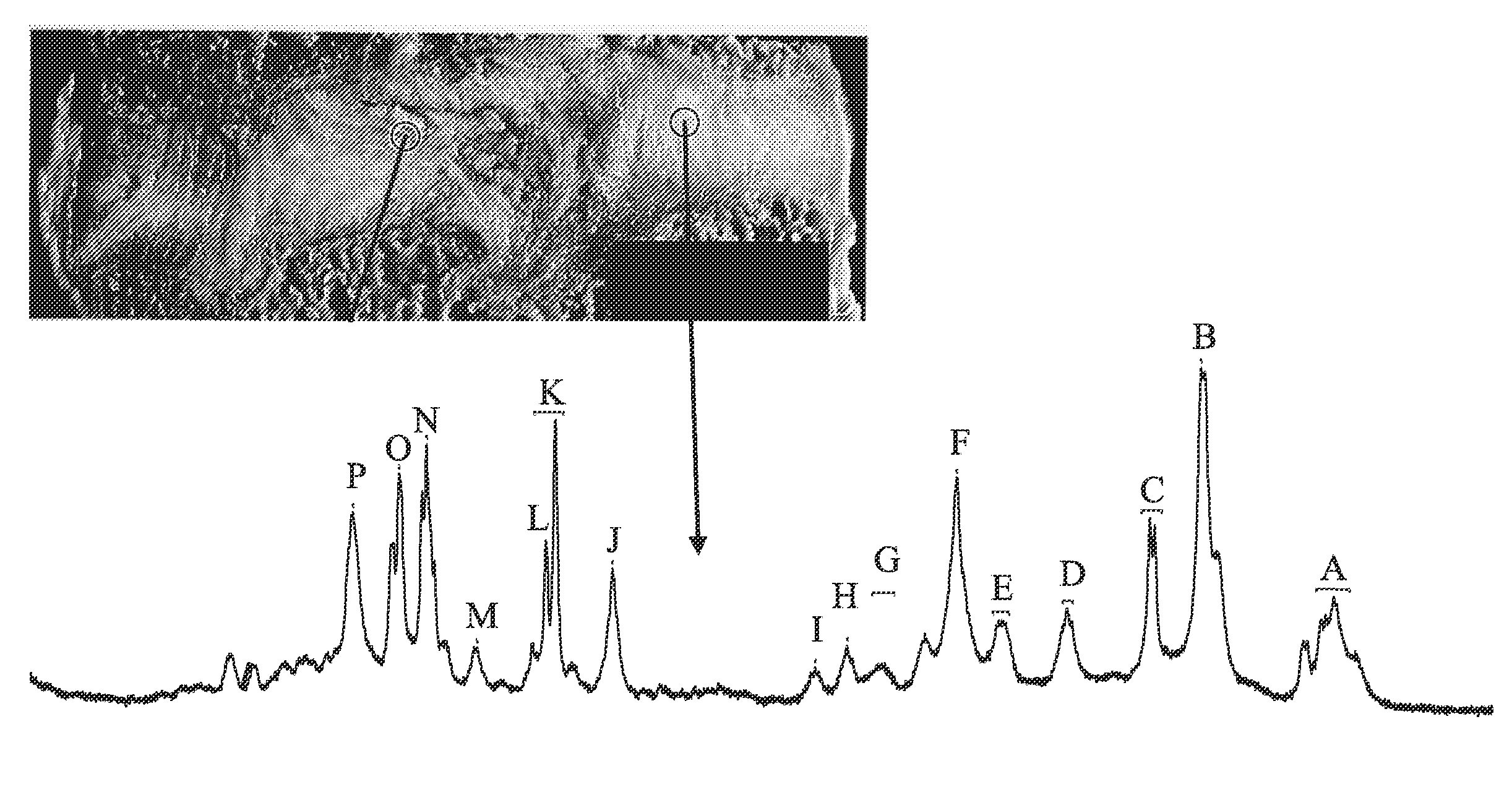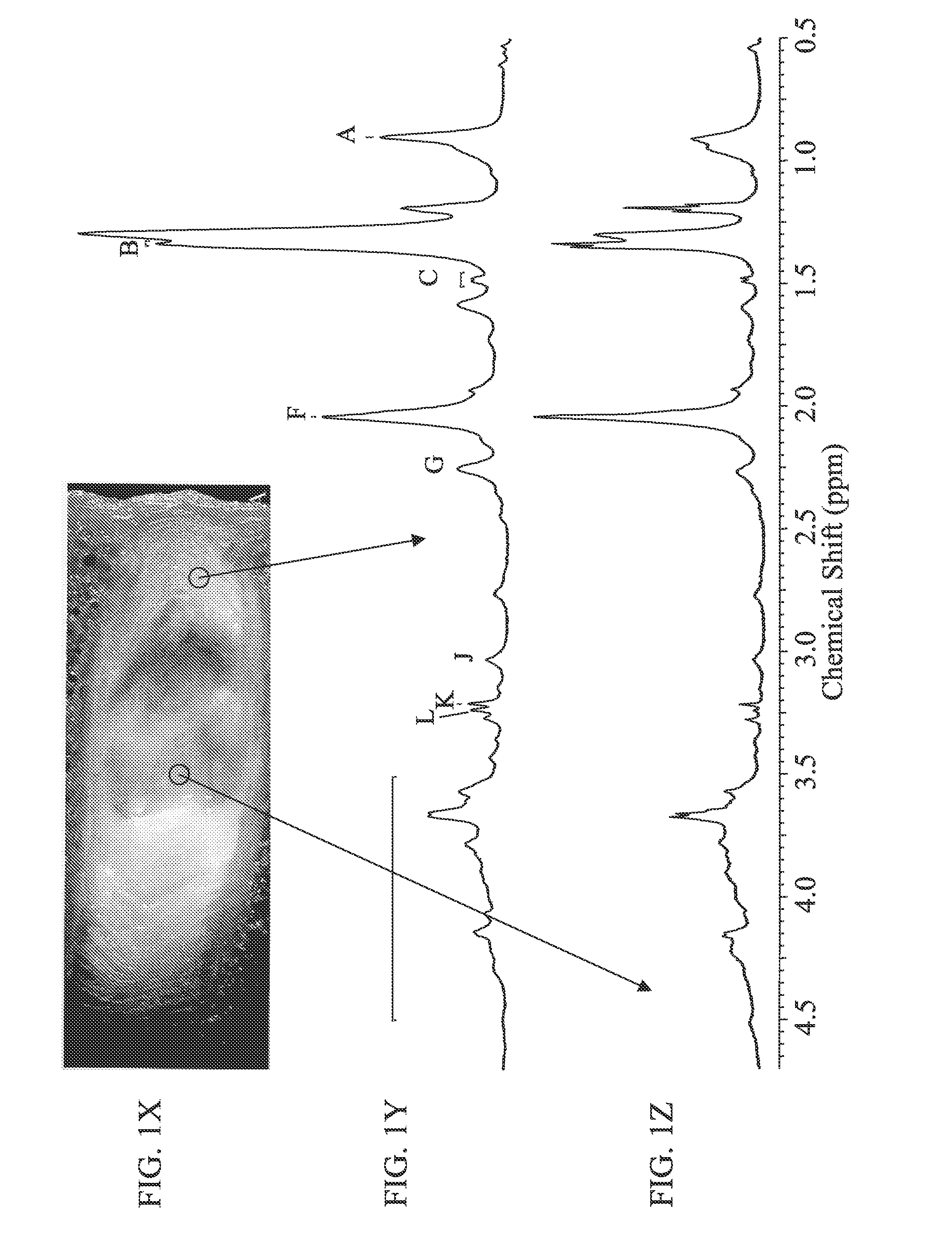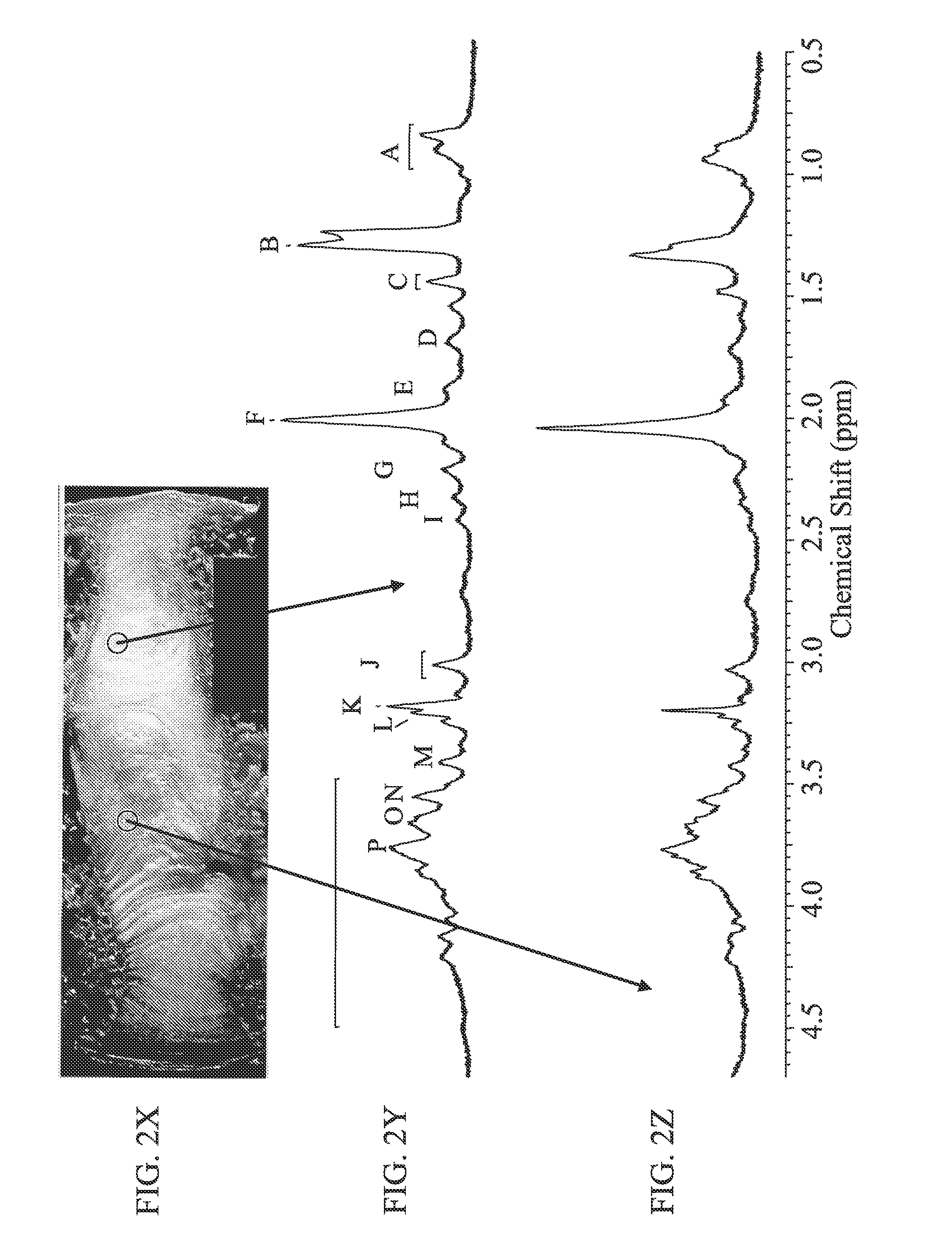Systems and methods using nuclear magnetic resonance (NMR) spectroscopy to evaluate pain and degenerative properties of tissue
a nuclear magnetic resonance and tissue technology, applied in the field of imaging tissues associated with skeletal joints, can solve the problems of inadequate, repeatable, non-invasive system and method, and provided as a useful medical tool
- Summary
- Abstract
- Description
- Claims
- Application Information
AI Technical Summary
Benefits of technology
Problems solved by technology
Method used
Image
Examples
example 1
1. Overview
[0099]The goal of this study was to determine the ability of high-resolution magic angle spinning (HR-MAS) NMR spectroscopy to distinguish different stages of intervertebral disc degeneration. 17 discs were removed from human cadavers and analyzed using one- and two-dimensional (TOCSY) 1H HR-MAS spectroscopy, and T1 and T2 relaxation time measurements to determine the chemical composition and changes in chemical environment of discs with increasing levels of degeneration (Thompson grade). Significant findings include that spectra were very similar for samples taken from annular and nuclear regions of discs and that visually apparent changes were observed in the spectra of the annular and nuclear samples from discs with increasing Thompson grade. Area ratios of the N-Acetyl to choline regions, and choline to carbohydrate regions of the spectra allowed for discrimination between discs of increasing Thompson grade with minimal overlap of individual ratios. Changes in T1 and ...
example 2
1. Introduction
[0176]Conventional imaging methods of assessing the painful, degenerated intervertebral disc generally focus solely on morphologic criteria. However, it is well-known that there is a poor correlation between morphologic findings and patient symptoms. The goal of this in vitro study is to utilize quantitative high-resolution magic angle spinning (HR-MAS) NMR spectroscopy as a tool to accurately characterize biochemical markers in disc specimens harvested from patients undergoing surgery. Spectra from discs obtained from patients that underwent discectomy for back pain and those of a reference population, consisting of patients undergoing surgery for scoliosis, were compared in attempts to identify biochemical signatures of painful disc degeneration.
2. Materials and Methods
[0177]Spectral data were acquired at 11.7 T (500 MHz), 1° C., and a 2,250 Hz spin rate using a Varian INOVA spectrometer equipped with a 4 mm gHX nanoprobe. Disc tissue removed at surgery in patients ...
example 3
1. Introduction
[0190]The goal of this study is to extend prior experience, using quantitative high-resolution magic angle spinning (HR-MAS) NMR spectroscopy to accurately characterize biochemical markers in disc specimens harvested from patients undergoing surgery, to experience observing NMR spectra of similar chemical signature targets in discs preserved in larger anatomic specimens using a commercially available clinical MRI system and commercially available surface coils. NMR spectroscopy data to be acquired and evaluated was for discs of ex-vivo bovine and cadaveric spines positioned in commercially available head coils, and discs of a living patient using a commercially available surface-spine coil. Papain was injected into bovine discs studied. This was intended to induce chemical degradation of proteoglycan, in order to monitor change over time in related magnetic resonance signals, in order to observe differences in the related NMR spectral peaks using the clinical test equ...
PUM
 Login to View More
Login to View More Abstract
Description
Claims
Application Information
 Login to View More
Login to View More - R&D
- Intellectual Property
- Life Sciences
- Materials
- Tech Scout
- Unparalleled Data Quality
- Higher Quality Content
- 60% Fewer Hallucinations
Browse by: Latest US Patents, China's latest patents, Technical Efficacy Thesaurus, Application Domain, Technology Topic, Popular Technical Reports.
© 2025 PatSnap. All rights reserved.Legal|Privacy policy|Modern Slavery Act Transparency Statement|Sitemap|About US| Contact US: help@patsnap.com



